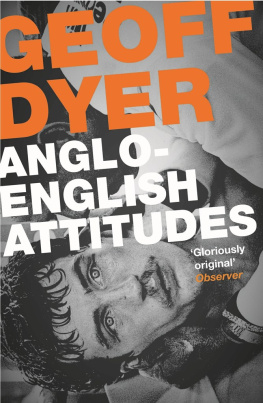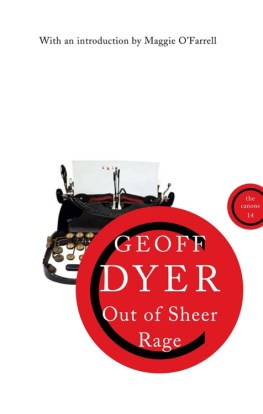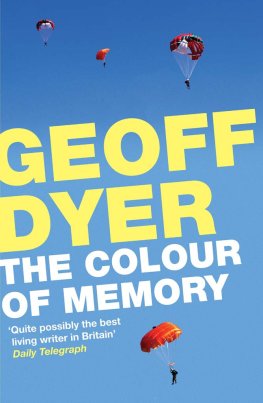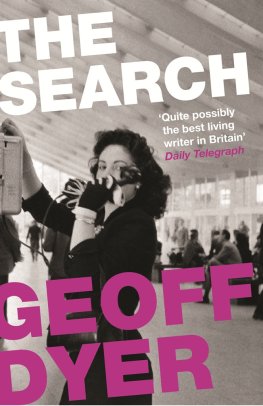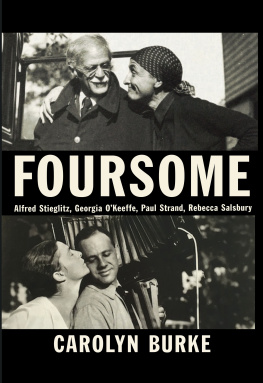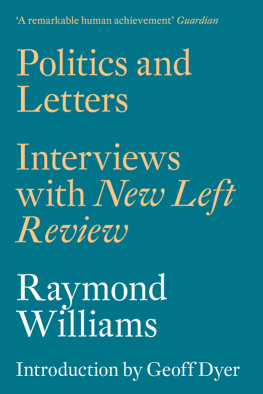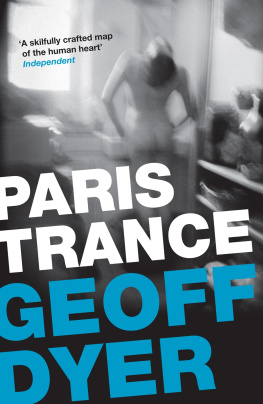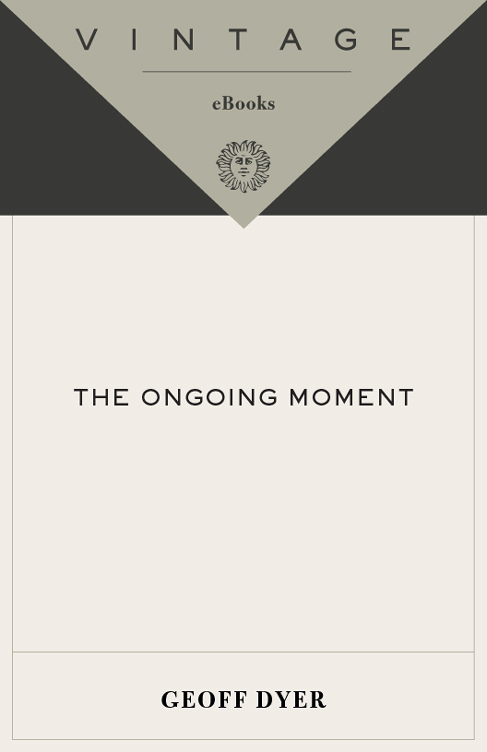Acclaim for Geoff Dyers
The Ongoing Moment
What we regard as canonical is a matter of connecting cultural dots, and Dyer makes connections, after choosing the dots. This wide-eyed Englishman helps us see America, as well as its ghosts.
Los Angeles Times
Quirky and inspiring.
Joyce Carol Oates, The Times Literary Supplement, Books of the Year
[Dyer] helps us get oriented, charmed and entertained. It is a remarkable achievement, especially when you consider that Mr. Dyer does not even own a camera.
The Dallas Morning News
Geoff Dyer discovered that interesting new pictures come (mostly) from interesting earlier pictures, and with wit and imagination he has followed the trail that leads from one barbershop photograph to the next, from park bench to park bench.
John Szarkowski, Director Emeritus of the Department of Photography, The Museum of Modern Art, New York
Geoff Dyer, English letters own Renaissance man carries out a sneaky sideways raid on the scholars and experts territory, creating something unexpected and rather beautiful in the process.
New Statesman
There is very little fine writing on photography. Geoff Dyers The Ongoing Moment adds superbly to that tiny canon: clever, provocative, witty and shrewdly on the nail.
William Boyd, The Scotsman
[The Ongoing Moment] flashes back, fast-forwards and kaleidoscopes seamlessly through the last century of American photography. One of the most graceful ruminations on photography ever written. From beginning to end Dyers tour de force is as inspirational as it is accessible.
The Sunday Telegraph (London)
This book on photography is really (sneakily) about ambition, mortality and American life. Dyers most satisfying book to date.
Independent on Sunday (London), Books of the Year
Exhilarating and wonderful. [Dyer] has given his reader not only a revelatory, looping road though the history of photography but also the sense of having entered into the collective consciousness of the photographers themselves.
Rachel Cohen, author of A Chance Meeting: Intertwined Lives of American Writers and Artists, 1854--1967
Dyers subtle, understated, unforgettable masterpiece on the best known, least understood art form in the world deserves to join [Susan Sontags On Photography] on our bookshelves.
Scotland on Sunday
Geoff Dyer
The Ongoing Moment
Geoff Dyer is the author of three novels: Paris Trance, The Search, The Colour of Memory; a critical study of John Berger, Ways of Telling; a collection of essays, Anglo-English Attitudes; and four genre-defying titles: But Beautiful (winner of a 1992 Somerset Maugham Prize, shortlisted for the Mail on Sunday/John Llewellyn Rhys Memorial Prize), The Missing of the Somme, Out of Sheer Rage (a finalist for a National Book Critics Circle Award), Yoga for People Who Cant Be Bothered to Do It (winner of the 2004 W. H. Smith Best Travel Book Award), and, most recently, The Ongoing Moment (winner of the ICP Infinity Award for Writing on Photography). He is also the editor of John Berger: Selected Essays and coeditor, with Margaret Sartor, of What Was True: The Photographs and Notebooks of William Gedney. In 2003, he was a recipient of a Lannan Literary Fellowship; in 2005, he was elected a Fellow of the Royal Society of Literature; in 2006, he received the E. M. Forster Award from the American Academy of Arts and Letters. He lives in London.
Also by Geoff Dyer
Ways of Telling: The Work of John Berger
The Colour of Memory
But Beautiful
The Search
The Missing of the Somme
Out of Sheer Rage
Paris Trance
Anglo-English Attitudes
Yoga for People Who Cant Be Bothered to Do It
For Rebecca
Contents
List of Illustrations
Black-and-white Photographs
Garry Winogrand: Untitled, 1950s
Eugne Atget: Htel des Archevques de Lyon, rue Saint-Andr-des-Arts, 1900
Colour Plates
Philip-Lorca diCorcia: New York, 1993
Bruce Davidson: Subway, 19801
Joel Meyerowitz: Truro, 1976
Joel Meyerowitz: Still Life with Newspaper, 1983
William Eggleston: Gas Station, 19661974
Stephen Shore: Beverly Boulevard and La Brea Avenue, Los Angeles, California, 21 June 1975
Peter Brown: Strip Centres, Duncan, Oklahoma, 1986
Michael Ormerod: Untitled, undated
Peter Brown: Barber Shop, Brownfield, Texas, 1994
Walker Evans: Train Station, Old Saybrook, Connecticut, 6 December 1973
Walker Evans: Traffic Markings, Old Saybrook, Connecticut, 15 December 1973
Walker Evans: Coffee Shop Hallway, Oberlin, Ohio, January 1974
the only thing in which I have been actually thorough
has been in being thoroughly unprepared.
Alfred Stieglitz
The capacity of photographs to evoke rather than tell, to suggest rather
than explain, makes them alluring material for the historian or
anthropologist or art historian who would pluck a single picture from a
large collection and use it to narrate his or her own stories. But such
stories may or may not have anything to do with the original narrative
context of the photograph, the intent of its creator, or the ways in
which it was used by its original audience.
Martha Sandweiss
I am not the first researcher to draw inspiration from a certain Chinese encyclopaedia described by Borges. According to this arcane work animals are divided into: (a) those that belong to the Emperor; (b) embalmed ones; (c) those that are trained; (d) suckling pigs; (e) mermaids; (f) fabulous ones; (g) stray dogs; (h) those that are included in this classification; (i) those that tremble as if they were mad; (j) innumerable ones; (k) those drawn with a very fine camels-hair brush; (l) et cetera; (m) those that have just broken the flower vase; (n) those that at distance resemble flies.
While the survey of photography undertaken in these pages can claim neither this degree of rigour nor eccentricity, it takes heart from earlier, well-intended attempts to marshal the infinite variety of photographic possibilities into some kind of haphazard order. Walker Evans said it was a pet subject of his how writers like James Joyce and Henry James were unconscious photographers. In the case of Walt Whitman there was nothing unconscious about it. In these Leaves [of Grass] every thing is literally photographed, he insisted. Nothing is poeticized. Keen to emulate the Priests of the Sun, Whitman created poems that, at times, read like extended captions in a huge, constantly evolving catalogue of photographs:
See, in my poems, cities, solid, vast, inland, with paved streets, with iron and stone edifices, ceaseless vehicles, and commerce,
See, the many-cylinderd steam-printing-press see, the electric telegraph stretching across the continent, []
See, the strong and quick locomotive as it departs, panting, blowing the steam-whistle,



